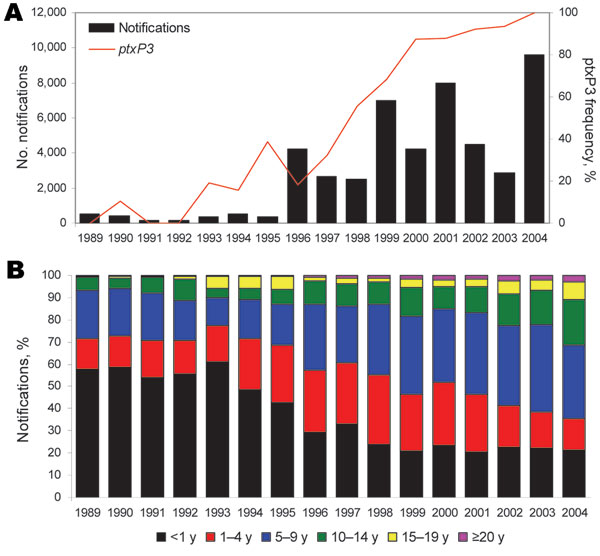Volume 15, Number 8—August 2009
Research
Bordetella pertussis Strains with Increased Toxin Production Associated with Pertussis Resurgence
Figure 2

Figure 2. Relationship between the emergence of pertussis toxin promoter 3 (ptxP3) strains and the epidemiology of pertussis in the Netherlands, 1989–2004. A) Temporal trends in the frequencies of ptxP3 strains and notifications. In this period 99% of the strains harbored either ptxP1 or ptxP3. B) Shift in age-specific distribution of notifications.
Page created: December 06, 2010
Page updated: December 06, 2010
Page reviewed: December 06, 2010
The conclusions, findings, and opinions expressed by authors contributing to this journal do not necessarily reflect the official position of the U.S. Department of Health and Human Services, the Public Health Service, the Centers for Disease Control and Prevention, or the authors' affiliated institutions. Use of trade names is for identification only and does not imply endorsement by any of the groups named above.